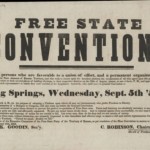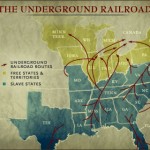In 1787 the Northwest Ordinance governing the territory that includes Indiana outlawed the holding of slaves. The state’s constitution reiterated that prohibition. In the 1820 case “State versus LaSalle,” the Indiana Supreme Court granted freedom to a woman who claimed her enslavement was a violation of state law.
Nonetheless, during the 1850-51 Constitutional Convention an eighty-percent majority of Hoosiers voted to incorporate Article 13, which decreed in part that “No negro or mulatto shall come into or settle in the State, after the adoption of this Constitution.” In other words, African-Americans, enslaved or not, were not welcome in Indiana. This ruling dovetailed with the Fugitive Slave Law, a federal regulation enacted the previous year, that made it illegal to give assistance to runaway slaves and levied large fines on those who did.
In spite of these attitudes towards African-Americans, Indiana did play a significant role on the path to freedom. Positioned just north of the slave-holding state of Kentucky, and with plenty of roads and waterways running north-south, the state was a natural conduit for those fleeing north. In addition, a number of abolitionists, Quakers, and others who left the slave-based economy of the South to settle in Indiana provided stations along the Underground Railroad.






















